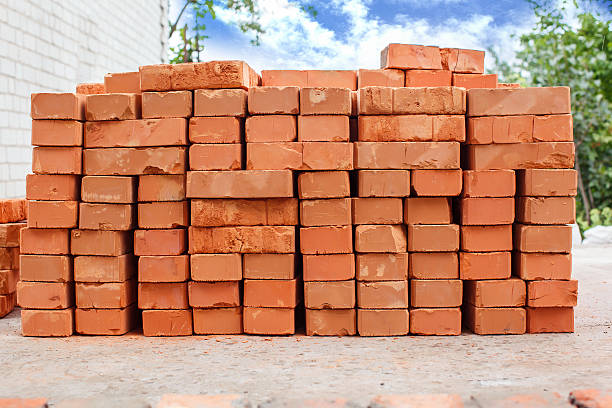Bricks Rate in Pakistan: Factors, Trends, and Implications

Introduction:
Bricks are a fundamental building material
widely used in construction projects throughout Pakistan. The rate of bricks
plays a crucial role in determining the overall cost and feasibility of
construction. In this blog post, we will delve into the factors that influence
the rate of bricks in Pakistanexplore the current trends in brick prices, and
discuss the implications for the construction industry and homeowners.
Understanding the Factors
Raw Material Availability:
The availability and cost of raw
materials used in brick manufacturing, such as clay and sand, significantly
impact brick rates. Fluctuations in the supply and demand of these materials
can cause variations in brick prices.
Energy Costs:
Brick production involves firing the raw
materials in kilns, which requires a considerable amount of energy. Changes in
energy costs, particularly fuel prices, can influence brick rates. Fluctuations
in energy prices can affect the overall production expenses and, subsequently,
the final price of bricks.
Labor Costs:
The cost of labor plays a significant role in
brick manufacturing. Factors such as wages, skill level, and productivity of
laborers can affect the overall production cost and, consequently, the brick
rates. Changes in labor costs, including minimum wage adjustments or changes in
labor market dynamics, can impact brick prices.
Infrastructure and Transportation:
The condition of
infrastructure and transportation networks can influence the cost of
transporting bricks from manufacturing sites to construction sites. If
transportation costs increase due to infrastructure deficiencies or fuel price
hikes, it can contribute to higher brick rates.

Current Trends in Brick Rates
Brick rates in Pakistan are
subject to fluctuations due to various factors, including economic conditions,
supply and demand dynamics, and policy changes. It is essential to monitor the
market trends to stay informed about the prevailing brick rates. Here are some
key points to consider:
Regional Variations:
Brick rates can vary across different
regions of Pakistan due to variations in raw material availability,
manufacturing practices, transportation costs, and local market dynamics. It is
important to consider the specific region when assessing brick rates.
Seasonal Fluctuations:
Brick rates may experience seasonal
fluctuations based on factors such as weather conditions, construction activity
levels, and demand patterns. For instance, during the monsoon season, brick
production and transportation may be impacted, potentially leading to higher
rates.
Economic Factors:
Macroeconomic conditions, such as
inflation, currency exchange rates, and overall economic stability, can
influence brick rates. Economic fluctuations can impact production costs, labor
wages, and demand for construction materials, affecting brick prices.
Government Policies:
Government regulations, taxes, and
subsidies related to the construction industry can have an impact on brick
rates. Changes in policies, such as import/export regulations, tax reforms, or
incentives for local brick manufacturing, can influence the availability and
pricing of bricks.

Implications for the Construction Industry and Homeowners
Fluctuations in brick rates have implications for both the construction
industry and homeowners. Understanding these implications can help stakeholders
make informed decisions. Here are some key points to consider:
Construction Costs:
Brick rates directly impact construction
costs, as bricks are a primary component of many construction projects. Higher
brick rates can increase the overall project expenses, potentially affecting
project feasibility, budgeting, and pricing of real estate.
Affordability:
For homeowners and buyers, fluctuations in
brick rates can influence the affordability of housing. Higher brick rates may
lead to increased property prices or affect the construction of affordable
housing initiatives.
Material Choices:
Fluctuating brick rates can prompt
stakeholders to explore alternative building materials or construction
techniques. In some cases, builders and homeowners may consider using
alternative materials like concrete blocksor precast panels if brick rates
become prohibitively high.
Market Dynamics:
Brick rates can influence market dynamics,
including supply and demand dynamics, competition among construction material
suppliers, and investment decisions in the construction sector. Monitoring
brick rates allows stakeholders to stay informed about market trends and make
strategic decisions.
Conclusion:
The rate of bricks in Pakistan is influenced by a
range of factors, including raw material availability, energy costs, labor
expenses, and transportation logistics. Understanding the current trends and
implications of brick rates is vital for stakeholders in the construction
industry and homeowners alike. By keeping track of market dynamics and
considering alternative building materials, stakeholders can navigate the fluctuations
in brick rates and make informed decisions to ensure cost-effective and
sustainable construction practices in Pakistan.









